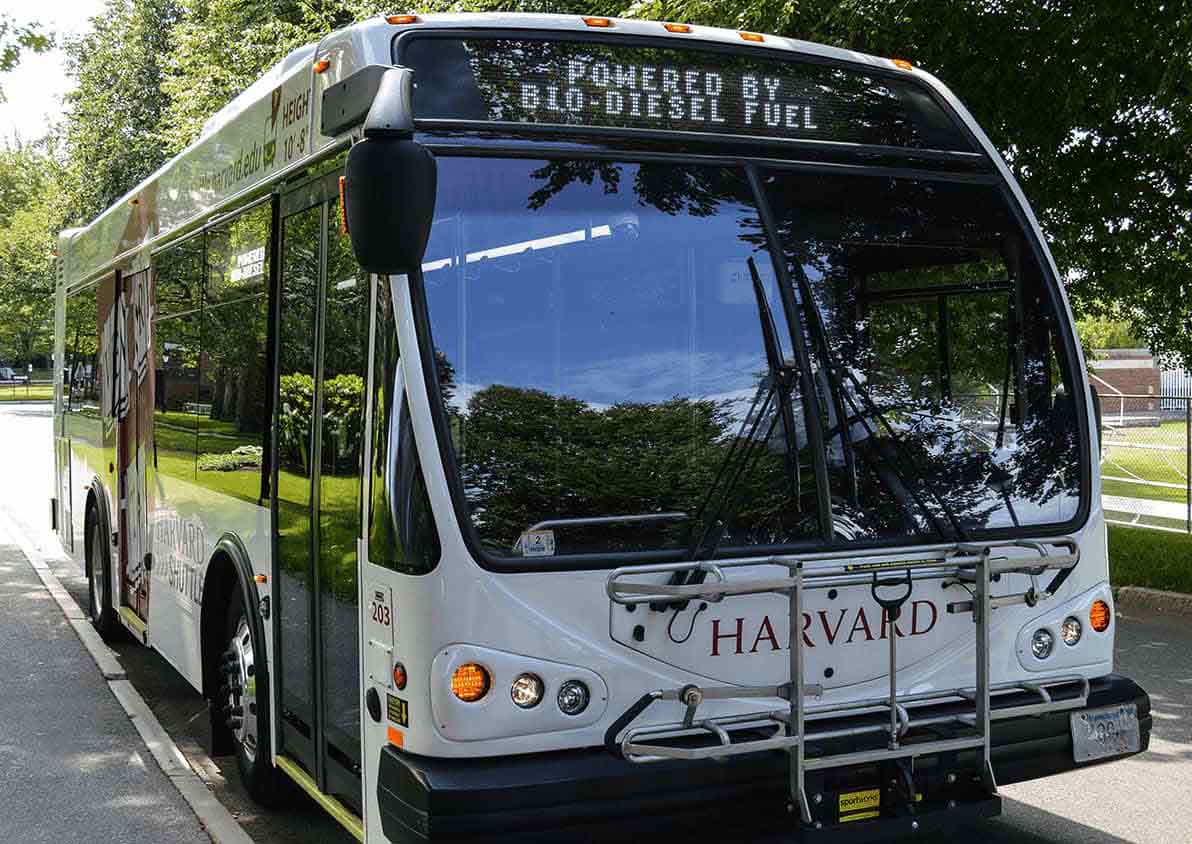Biodiesel Helps Harvard Ace Its Sustainability Tests
Ivy League school’s fleet sees emissions go down and performance stay strong with biodiesel blends.
When Harvard University adopted a comprehensive and aggressive five-year sustainability plan in 2014, David Harris Jr. felt like his department was ahead of the curve.
“I like to say we already had our homework completed, that we were well on our way,” says Harris, the director of transit and fleet management at the famed university. “We’ve been using biodiesel since 2004.”
Sustainability has become a major initiative for many organizations across the public and private sectors. It can have broad applications — Harvard’s plan, for example, includes everything from food to building construction to water usage to procurement — but transportation and fuel usage are a component of just about any plan.
That’s the case with Harvard, and biodiesel has proved to be a difference-maker in the commitment laid out in its sustainability plan.
Starting in spring 2016 and going back a year, Harvard’s biodiesel usage reduced hydrocarbon and sulfur dioxide by 20 percent, carbon dioxide by 15 percent, carbon monoxide by 12 percent, and particulate matter by 12 percent, according to the university.
It’s numbers like those that led the U.S. Environmental Protection Agency’s New England office to recognize Harvard Fleet Management with the 2016 Environmental Merit Award for showing ingenuity and commitment to improving the environment.
Other fleet sustainability efforts include right-sizing the fleet, starting an anti-idling campaign and signing on to the NAFA Fleet Management Association’s accreditation program for sustainable fleets.

‘Ahead of the curve’
The university’s fleet department started researching alternative fuels in the early 2000s. Harris found that back then (and even now) many options required by the investment, such as natural gas, were cost prohibitive.
“When we were presented with biodiesel, it was almost the simplest sustainability solution,” he says.
Harvard started using biodiesel in 2004 in vehicles that were past their warranties. By 2005, they were fueling nearly every diesel vehicle with biodiesel blends.
“We weren’t having any issues that concerned us,” Harris says. “We were ahead of the curve. We just said, ‘Go for it.’”
In the first full year of use, Harvard used 35,000 gallons of biodiesel. In fiscal year 2016, that number topped 100,000 gallons.
Biodiesel improves quality of fleet
Harvard’s fleet of more than 90 diesel-powered vehicles fills up with a B20 blend year-round. Performance has never been an issue. In fact, when a unit needs replacement and there’s an option of gas or diesel, Harvard usually purchases the diesel model.
“Biodiesel has really helped improve the overall efficiency and quality of the diesel fleet with the added lubricity and the fact that it’s always cleaner burning,” Harris says. “We have been able to run our diesel vehicles over the 100,000-mile mark with no problem.”
That’s a message he shares with other fleet managers. He also tells them that, at a time when keeping up with evolving diesel technology is one of the biggest challenges in the fleet industry, biodiesel gives him no anxiety.
“Biodiesel has been the least of our challenges since we’ve been using the fuel,” he says. “We can just pump it and turn the other way.”
LIKE WHAT YOU READ?
Chevron delivers insightful content like this to your inbox in our e-newsletters. Sign up today.